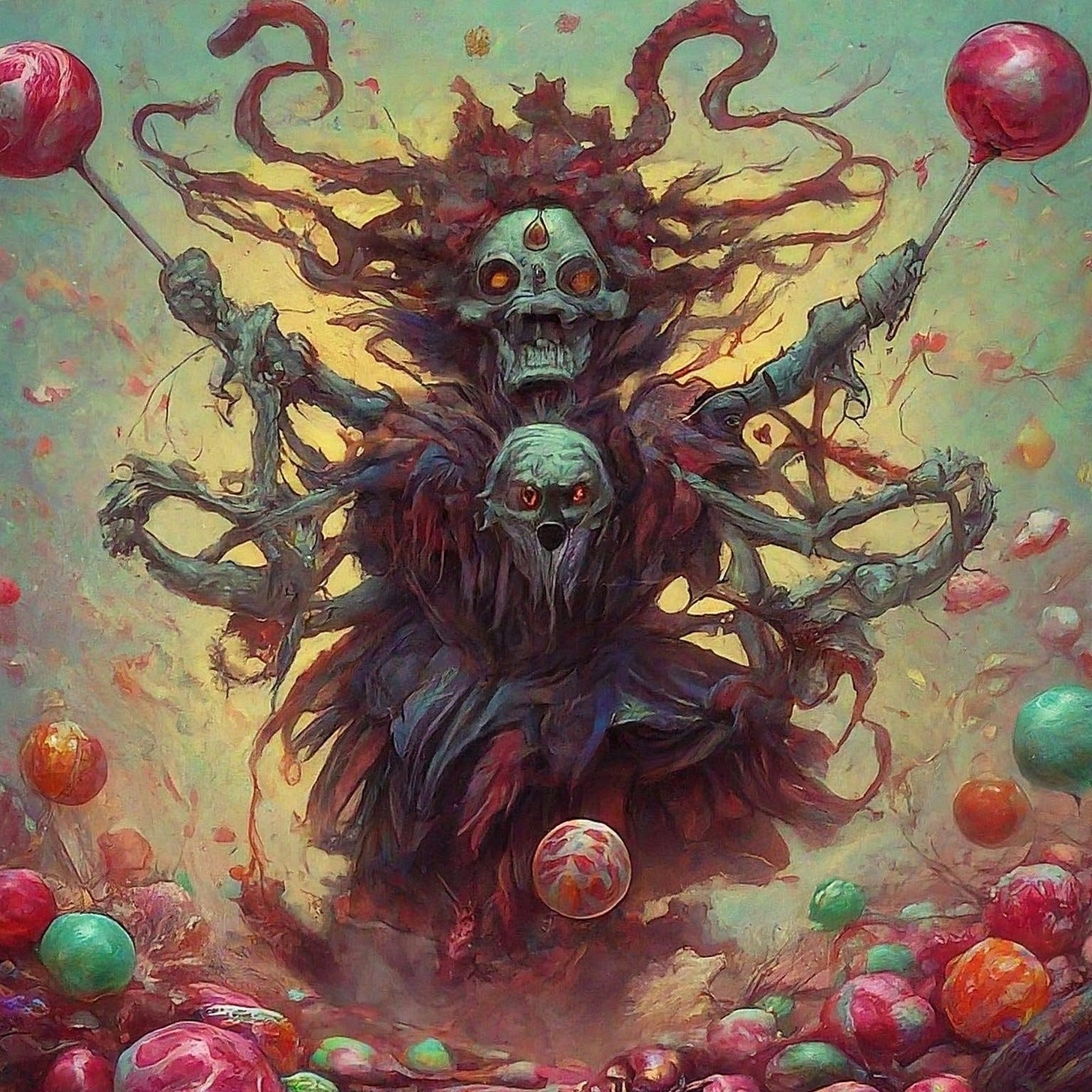Unveiling the Crucible: A Hilariously Sober (and DARK) Look at the Salem Witch Trials
Salem Witch Trials: Were They REALLY Just Pointy Hats & Burning People? (Spoiler Alert: It’s Way Crazier!) ☕️
Imagine Salem, 1692: a time when a teenager flailing about like a malfunctioning pool noodle could land you accused of witchcraft by an invisible gremlin. This wasn’t a particularly inspired episode of Scooby-Doo, but a real event that spiraled into the infamous Salem Witch Trials.
Buckle up, history buffs, because we’re about to debunk the myth of Salem as a town solely consumed by mass hysteria.
We’ll delve into the social anxieties, potential political agendas, and even a sprinkle of (unintentional) rye bread poisoning that fueled this dark chapter in American history.
A Crucible of Crazy: Salem 1692 Edition
Forget Starbucks and selfie sticks, rewind the clock to Salem, 1692. This wasn’t your grandma’s quaint New England town. Picture a community so uptight they made Puritans look like party animals. Every Sunday sermon felt like a three-hour guilt trip, and the fear of divine punishment hung so thick you could practically choke on it.
Spooky forests surrounded Salem like a bad toupee. Every rustle of leaves sounded like demonic chanting, and owls were basically Satan’s personal messengers. Then came the winter from heck.
Food stores vanished faster than a magician’s rabbit, sickness ran rampant, and tempers flared like a dragon with indigestion. Add simmering tensions with Native Americans to the mix, and you’ve got a pressure cooker primed to explode.
Enter: a gaggle of teenage girls acting, well, possessed. We’re talking contorting their bodies into human pretzels, screeching like banshees on helium, and babbling like they just discovered a secret language. The local doc, lacking a medical degree (shocking, right?), diagnosed them with witchcraft.
This, my friends, was like pouring gasoline on a bonfire of anxiety.
Fear of the devil, social anxieties the size of Texas, and good old-fashioned paranoia all merged into a terrifying witch hunt that would make even Lord Voldemort blush.
The Salem Shuffle: Accusations, Examinations, and a Whole Lot of WTF
The witch hunt in Salem wasn’t exactly CSI: Massachusetts. Forget fancy fingerprint dusting and DNA analysis. Imagine a system of justice more akin to a game of “telephone” played by a bunch of sleep-deprived villagers after a particularly strong batch of fermented apple cider.
That’s about as reliable as the Salem witch trials ever got.
Here’s how it went down: Basically, anyone could accuse anyone of witchcraft. All it took was a pointed finger and a dramatic declaration of demonic possession. There were “examinations,” but these were less medical procedures and more public freakouts.
The accused were forced to hold heavy stones (because apparently, witches were superhumanly strong?), recite the Lord’s Prayer backwards (spoiler alert: most people can’t recite it forwards under pressure), and undergo what can only be described as a medieval stress test.
The evidence?
Oh, about as flimsy as a tissue paper umbrella in a hurricane.
The star witness? Spectral evidence.
Basically, if you dreamed someone was tormenting you, guess what? They must be a witch! Think of it as the original social media smear campaign, except instead of angry tweets, you had people testifying they saw you flying around on a broomstick in their dreams. Not exactly air-tight evidence, even by Judge Judy’s standards.
Now, let’s talk about the absurdity of it all. We’re not just talking accusations against grumpy neighbors or people with too many cats. A dog was accused of witchcraft for burying its bone a little too enthusiastically.
Apparently, enthusiastic bone burial was a sign of the devil in 1692 Salem. And don’t even get us started on the spectral evidence. People were accused based on the dreams of young girls who, as historical evidence suggests, might have been suffering from a bad case of ergot poisoning from moldy rye bread (but more on that later).
One particularly influential figure during this whole mess was Cotton Mather. This guy was a prominent minister, but his scientific reasoning left something to be desired.
Imagine a man who believed dreams were a direct line to the devil and whose idea of evidence was based on whispers and accusations. Cotton Mather fueled the fire of the witch hunt, lending his credibility to this whole crazy carnival.
The bottom line? The Salem witch trials were a chaotic mess fueled by fear, mob mentality, and a complete lack of anything resembling real evidence. It was a dark chapter in history, a reminder of how easily societies can spiral out of control when reason takes a backseat to hysteria.
Rye and Redemption: Were the Witches Just Trippin’?
So, if it wasn’t demonic possession fueling the girls’ bizarre behavior, what was? Enter the fascinating (and slightly horrifying) theory of ergot poisoning. Imagine a bad case of food poisoning, but instead of the usual stomach woes, you get hallucinations, uncontrollable twitching, and a burning sensation that makes you feel like you’re dancing on hot coals.
Sounds delightful, right?
Well, that’s exactly what ergot poisoning can do.
Ergot is a fungus that can grow on rye and other grains. When consumed in high enough quantities, it can wreak havoc on your nervous system, causing symptoms eerily similar to what the afflicted girls in Salem were experiencing — convulsions, hallucinations, and a general feeling of being possessed by something… unpleasant.
Think of it as a bad trip fueled by fungus, not exactly the kind of party favor you’d bring to a potluck.
This theory, backed by some scientific evidence (source), suggests that the girls’ strange behavior might have had a very real, and very moldy, explanation.
A harsh winter could have led to a poor harvest, forcing people to rely on potentially ergot-contaminated rye. This, in turn, could have caused the bizarre symptoms that sparked the witch hunt.
But hold on, there’s more to the story than just bad bread. Let’s not forget the good ol’ fashioned human drama. Salem in 1692 wasn’t exactly a social utopia. There were simmering tensions, land disputes, and personal vendettas galore.
(Source)
The witch hunt might have been a convenient way for people to settle old scores or target those on the social fringes. Maybe that grumpy old lady down the street who always yelled at the kids was suddenly accused of witchcraft because her pet crow seemed a little too… well, witchy.
The point is, the accusations weren’t always random. Social and political dynamics likely played a role in who got swept up in the hysteria. Ergot poisoning might explain the initial symptoms, but it doesn’t explain the frenzy that followed.
Fear, suspicion, and a good dose of human conflict all fueled the flames of the witch hunt.
A Legacy of Fear: The Dark Side of Salem
The Salem Witch Trials weren’t some spooky campfire story; they were a horrific miscarriage of justice. Nineteen innocent people were hanged, their lives snuffed out based on flimsy accusations and spectral evidence. Countless others languished in prison, living in constant fear of a fate worse than death. A dark cloud of suspicion and paranoia settled over the entire community. This wasn’t a victory for good; it was a chilling display of mob mentality at its most destructive.
The legacy of Salem serves as a stark reminder of the dangers of jumping to conclusions based on accusations alone. In the heat of the moment, fueled by fear and suspicion, reason takes a backseat. Think twice before hitting “retweet” on that inflammatory social media post or getting swept up in online outrage. Take a minute to fact-check, to question the narrative, and to resist the urge to point fingers before all the evidence is in.
The Salem Witch Trials weren’t a one-time event. Even today, we see echoes of this dark chapter in the form of scapegoating and the persecution of minority groups. Whether it’s online harassment campaigns or the demonization of a particular social class, the tactics might have changed, but the underlying human desire to find a scapegoat persists.
The importance of critical thinking, then, has never been greater. We need to be able to evaluate information objectively, to challenge assumptions, and to fight for fairness and justice. The lessons of Salem are a call to action: don’t be a bystander in the face of injustice. Speak up for those who are being targeted, and demand evidence before participating in a modern-day witch hunt.
The Salem Witch Trials may be one of many chilling chapters in American history, but they don’t have to be the ending.
By remembering the past, by learning from its mistakes, we can strive for a future where reason and critical thinking hold sway, where accusations are met with skepticism, and where innocent lives are never again sacrificed at the altar of fear.
The Last Word: Beyond the Hysteria (Conclusion)
The Salem Witch Trials were more than just a case of mass hysteria.
Sure, fear and social anxieties played a huge role, but ergot poisoning, political agendas, and even personal vendettas likely fueled the flames.
It’s a complex story, a dark stain on American history that serves as a stark reminder of the dangers of mob mentality and the importance of critical thinking.
So, the next time you encounter something strange or someone acting unusual, take a deep breath and resist the urge to jump to conclusions.
Maybe there’s a more logical explanation lurking beneath the surface.
After all, in today’s world of social media and instant outrage, a little critical thinking can go a long way in preventing a modern-day witch hunt.
Remember Salem, and remember to question everything.
Woah, that was wilder than a banshee on a sugar rush! (CTA)
Did you learn something new about the Salem Witch Trials?
Maybe you even snorted milk out your nose at one of the jokes (no judgment, we’ve all been there).
If you enjoyed this history lesson with a hilarious twist, then do your fellow history buff a favor and SMASH that like button (or whatever it is here) faster than a teenager fleeing detention!
Feeling generous?
Share this article with your friends and family — knowledge is power, and all that jazz.
And hey, if you want a heads-up on more entertaining explorations of history’s weirdest corners, then sign up for my newsletter down below.
Consider it your VIP pass to a world of wacky historical tidbits and stories that are guaranteed to tickle your funny bone and make you a trivia night champion.
So, what are you waiting for?
Dive in, history buffs, and remember — question everything, especially that coworker who brings tuna casserole to potlucks.
Just sayin’.







